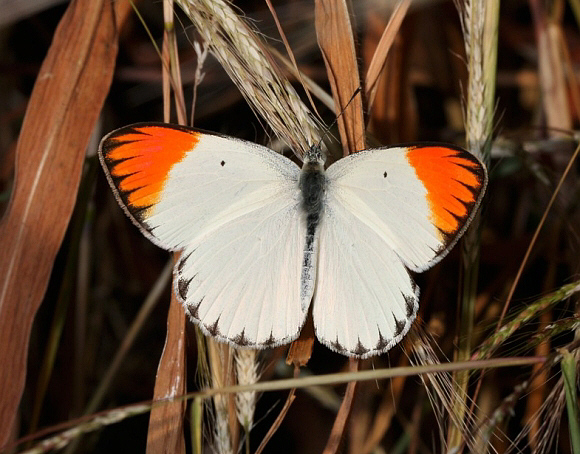
Introduction
The genus Colotis comprises of 40 species, 39 of which are primarily or entirely Afrotropical in distribution. The majority of species have pure white uppersides, with prominent orange, yellow or crimson tips to the forewings. The undersides of most are pale whitish or buff, marked with sooty blackish submarginal spots, and a band of smaller post-median spots.
Colotis antevippe is a widespread and fairly common insect, distributed from Gambia to Ethiopia and south to Angola, Namibia, Mozambique and South Africa. It also occurs in s.w Arabia.
Habitats
This species inhabits savannah, Acacia scrub and large clearings in dry woodlands.
Lifecycle
The larval foodplants include Maerua, Capparis, Boscia, Cabada and Ritchiea ( Capparaceae ).
Adult behaviour
Colotis antevippe is migratory in behaviour, and will fly long distances to seek new breeding areas when the dry season sets in. In sunny weather the butterflies are very active and rarely settle for long, but they can be found basking among the grasses or on bushes, early or late in the day when temperatures are lower.
